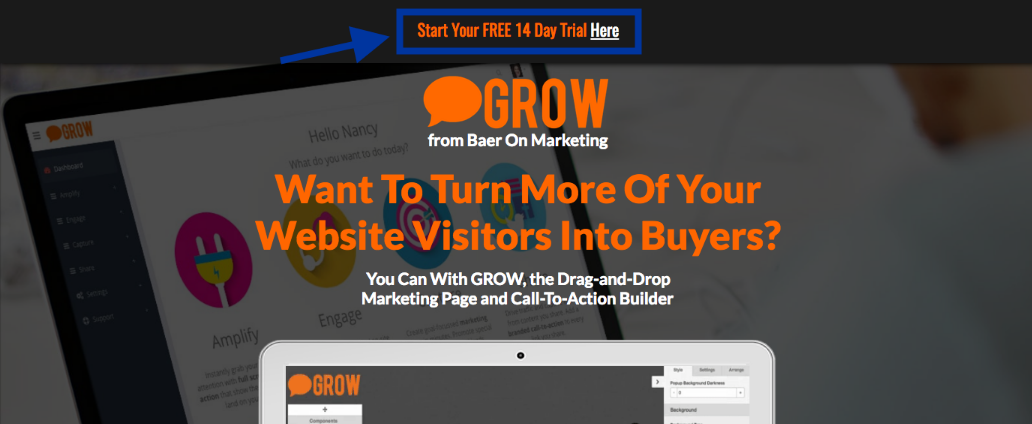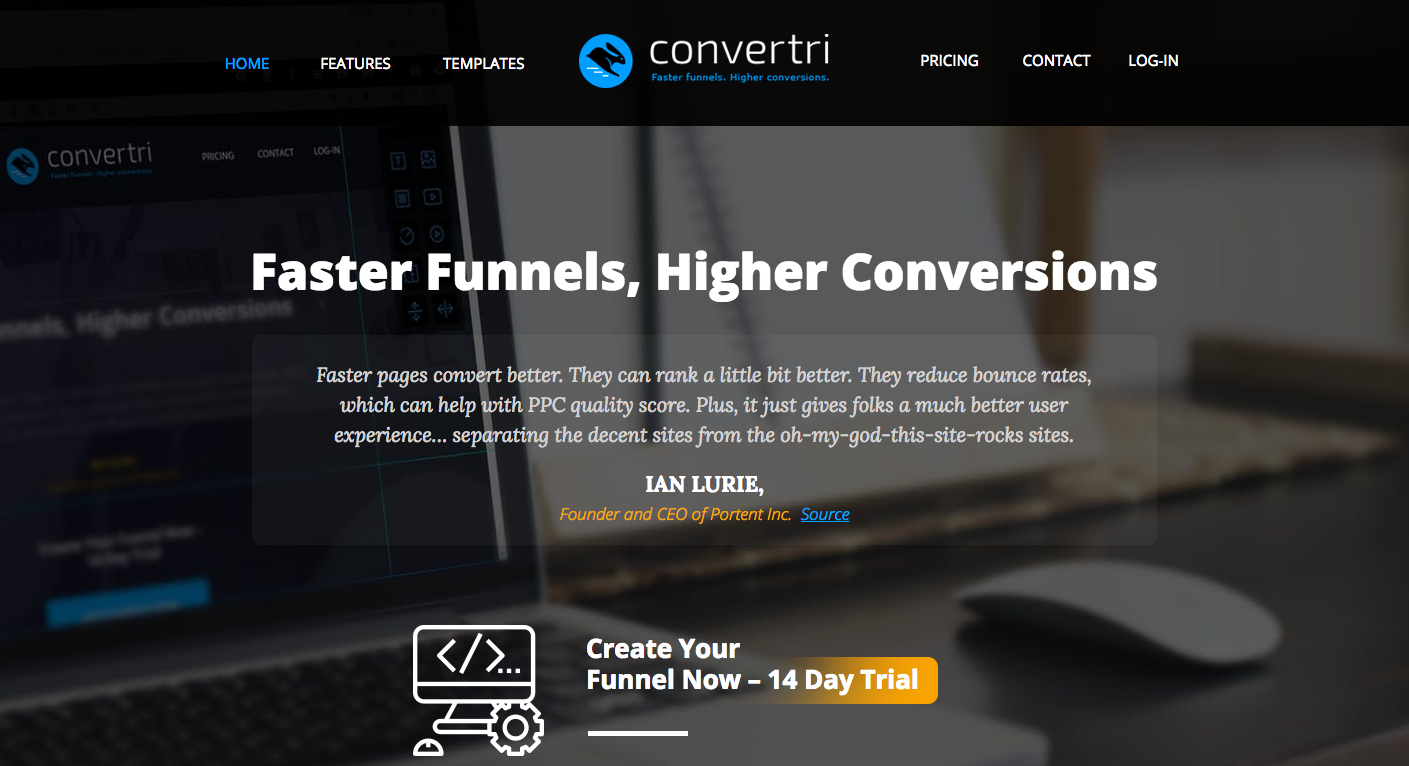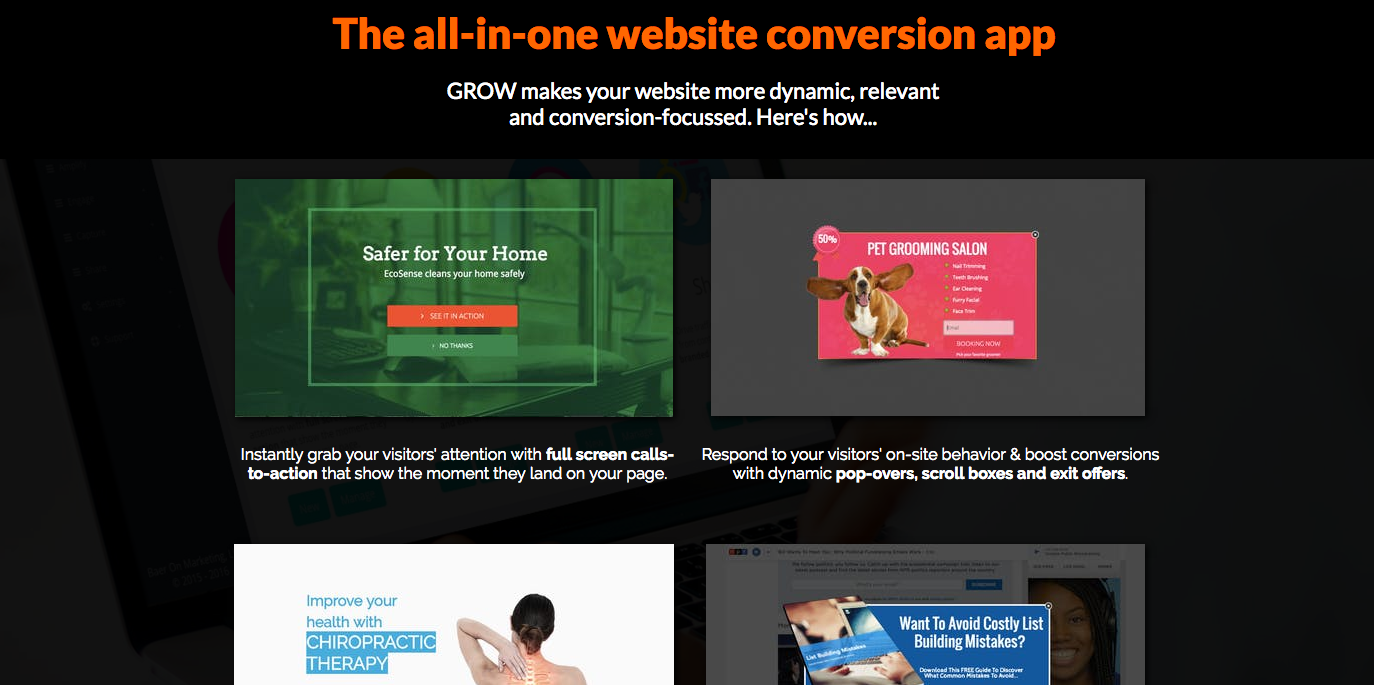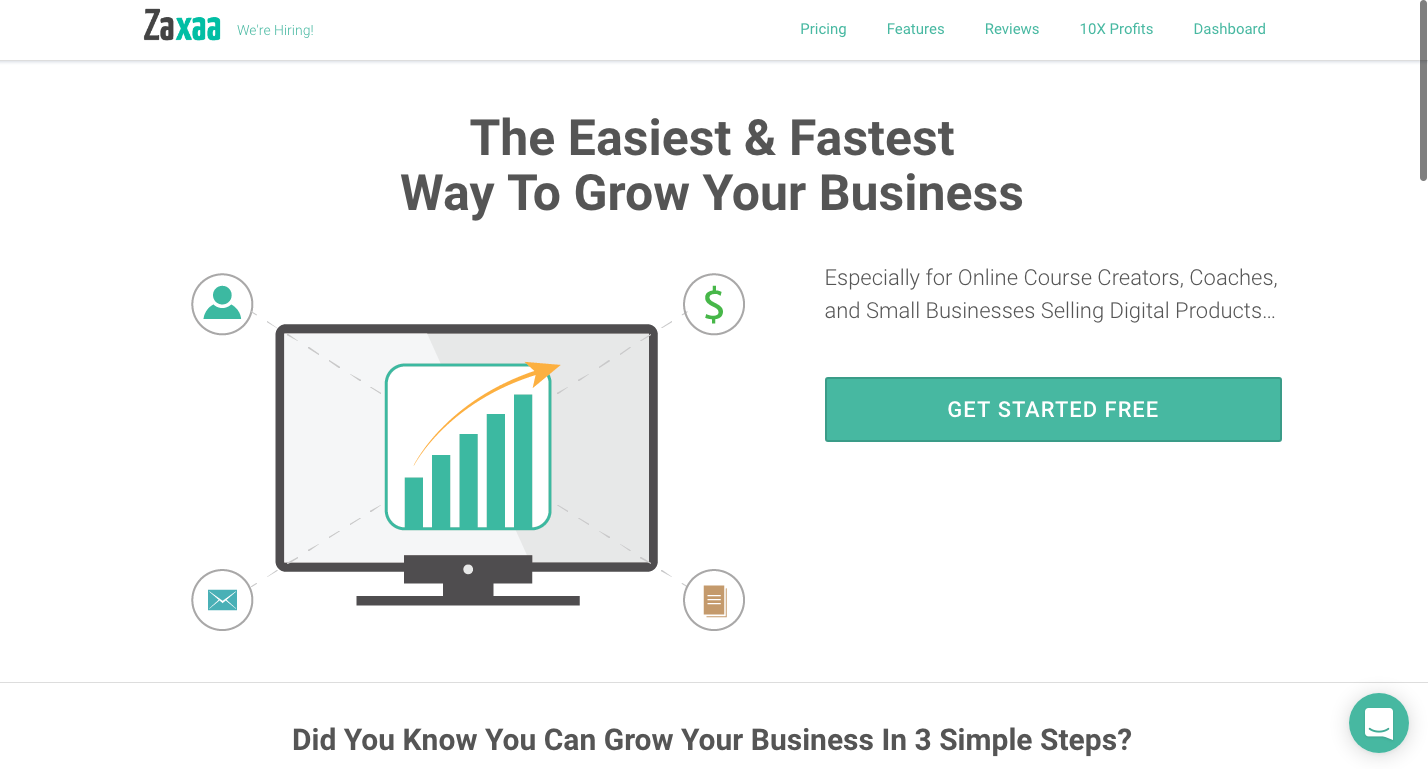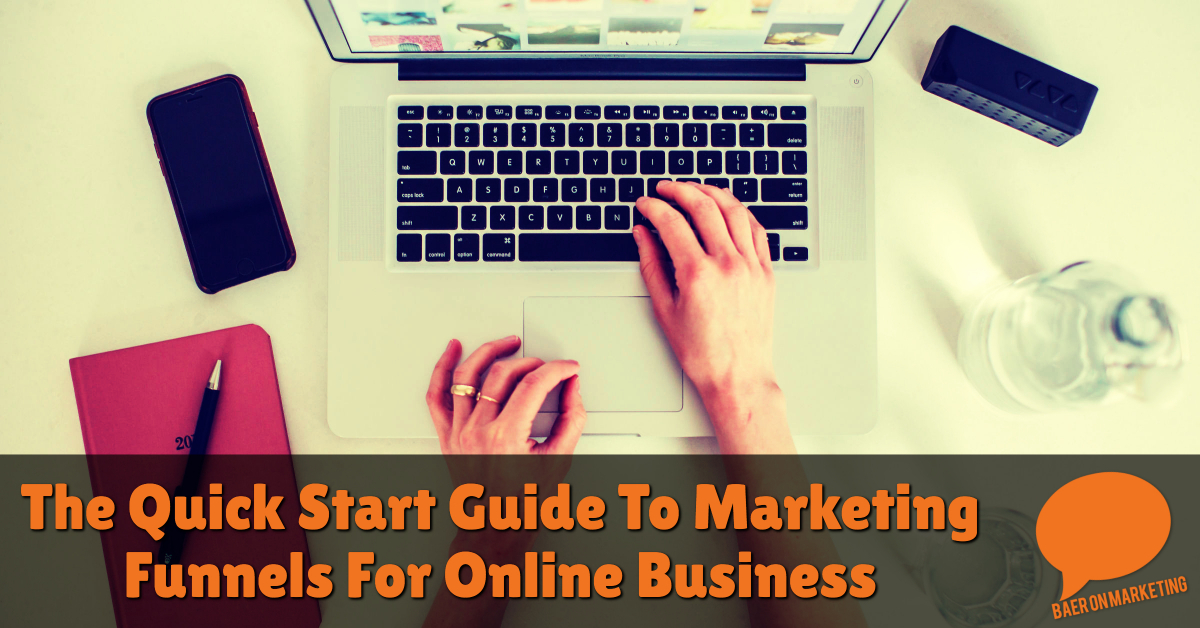
For an online business owner, your marketing funnel is easily one of the most important marketing tools you have. And yet many entrepreneurs – both new and established – have no clear understanding of what a funnel is or how it works.
And, as you can probably imagine, if you don't fully understand (or take advantage of) this critical part of your business means fewer sales, lower profits, and ultimately, an unstable business.
A Simple Marketing Funnel
At its most basic, a funnel consists of free content, which typically requires nothing of your readers in exchange for access. Examples of this kind of free content might include blog posts, YouTube videos, Facebook content, and other information readers can access at no cost. This is the “top” of your funnel… the widest part, which will attract the greatest number of eyeballs.
Next, you’ll have an attractive (and relevant) offer that requires a very small “payment” of sorts – typically an email address. You’ve seen this type of offer on websites all over the internet, and probably even signed up for some yourself. This might be a free ebook or guide, video series, checklist, workbook, or other valuable content that is available in exchange for “opting in” to an email list.
Once on your mailing list, you might then present your readers with a series of free or low-cost offers. Perhaps you have a free trial for your product or service or an inexpensive ebook. With our marketing software, GROW, we use a 14 day trial to give people a chance to use our software before they buy.
Using a low-priced product can help identify which of the people on your list are “buyers,” and might have the potential to invest more with you in the future. Getting an initial commitment with a small purchase or a trial use of your product or service also gives you more leverage in presenting additional, higher priced offers. As they continue to buy, they move closer and closer to your high-end offers, which make up the bottom of your funnel.
How Your Funnel Works
Imagine your funnel as looking like, well, a funnel, it’s easy to see that your free content—at the top—is consumed by the largest number of readers. Below that, your extreme low-cost item (available only for the cost of an email address) attracts a smaller subset of the true freebie seekers. Next, your low-priced products bring in yet a smaller group. So, this whole time, the funnel is getting narrower, as people who want to move further down the funnel self-select themselves.
Finally, as you near the tip of the funnel, only the most loyal of fans and customers will purchase your highest priced offers.
Your job, as the business owner, is to ensure that your funnel leads buyers naturally from the top, free offers, all the way to the bottom. The more buyers you can keep in your funnel, the more money you will make.
3 Essential Pages Every Funnel Must Have
Let's take a look at the most basic funnel composition, and some of the essential elements you'll need to create one.
Sales Page
This one obviously comes first. You might call it a landing page, or in the case of a free opt-in, a squeeze page. It serves one purpose—to get the reader to take action. Whether that’s to buy a product or offer up their email address in exchange for a free gift, this is the gateway into your funnel. Everything that follows depends on this page, so you want to be sure you:
Include a clear call to action—“Buy Now” or “Click here to download this report for free”
In this example, I'm selling a simple WordPress plugin that creates clickable images in Facebook.
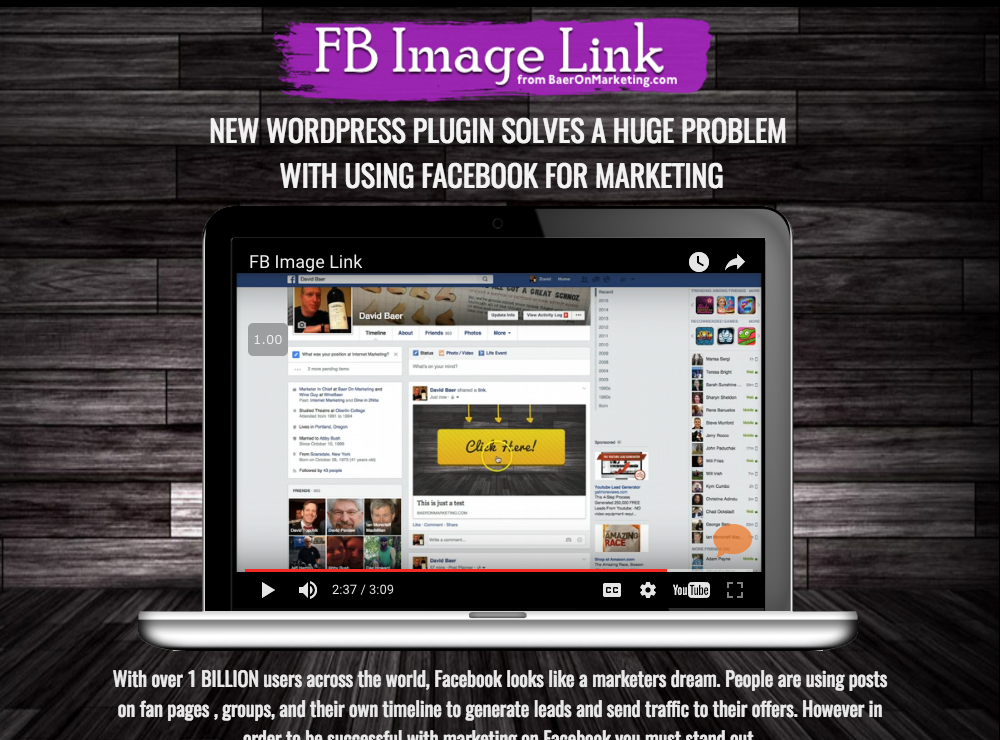
With these kinds of pages, you'll want to eliminate distractions—that means no links to other websites or even a navigation bar. Address the readers’ pain points and how your offer provides the solution.
Confirmation Page
Here’s where we ask the reader to confirm their intent. For a sales funnel, this confirmation page might actually be your checkout page. It’s where they enter their payment details.
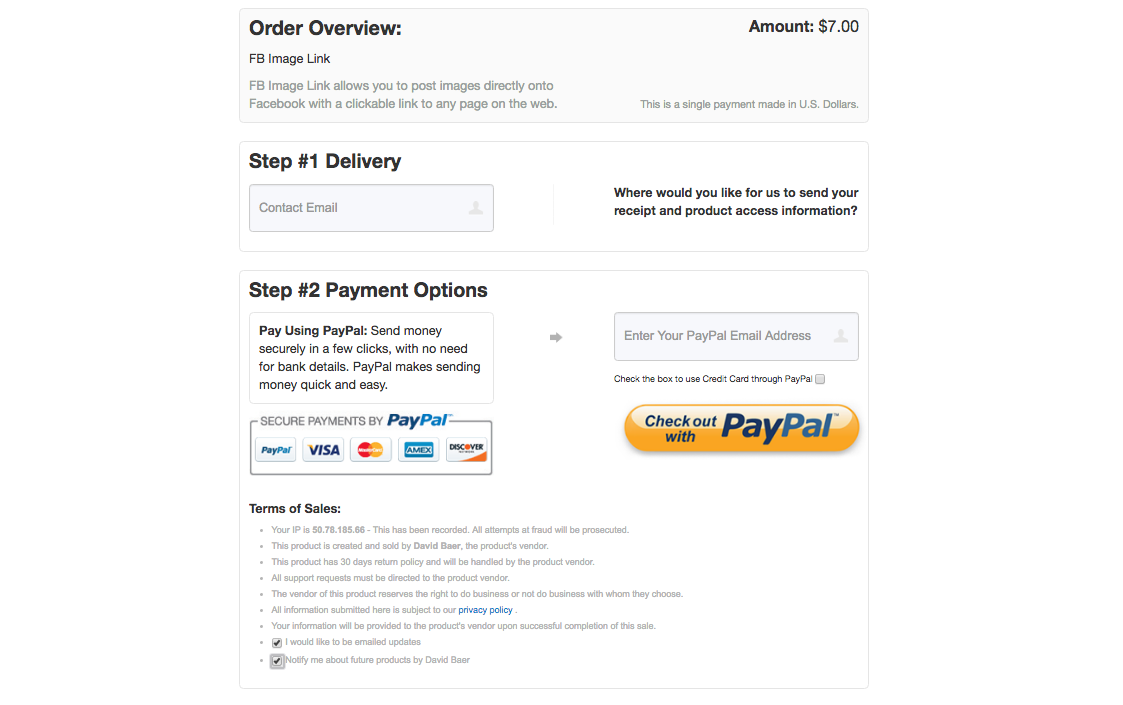
For a free offer, it’s simply the page your email management system directs them to next. It’s a holding page, if you will, while you wait for them to confirm their email address.
If you’re setting up a free funnel, this page has great power—and you don’t want to waste it! Here is where you can offer an upsell, remind people to follow you on social media, and give them a peak at your other products and services.
Remember, though, that they will only see this page once, so don’t put anything here that they will need to refer back to. That’s what the thank you page is for.
Thank You Page
This is where they actually collect their downloadable item, or get information about how your product will be delivered.
Like the confirmation page, this is valuable real estate, so you want to be sure you use it wisely. In addition to the downloadable item your customer just purchased (or opted in for) you also want to showcase your other offers—especially those at a slightly higher price point. Here’s why: the person looking at this page is a hot prospect. He or she is in a buying mood. You want to be sure to take advantage of that by putting your most relevant offers on this page.
In this example, I actually highlight our marketing app, GROW, on the page where buyers go to download the plugin they've just purchased.
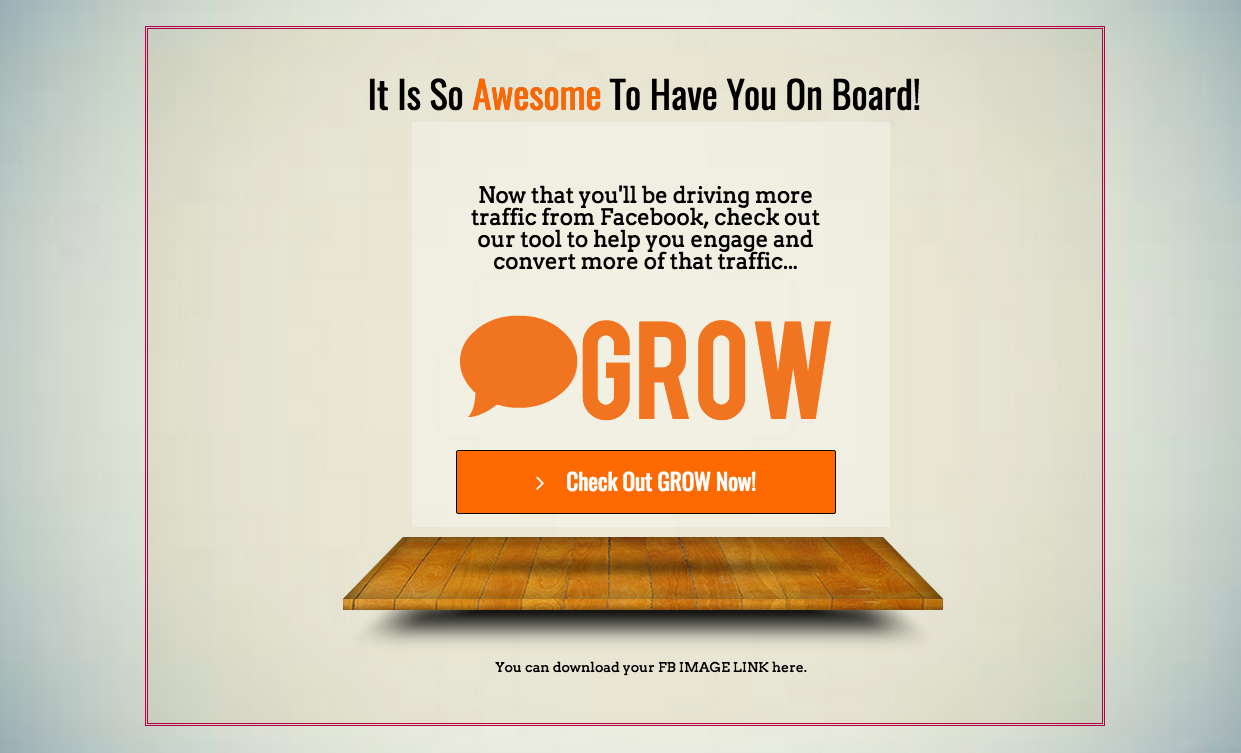
Other examples might include:
• A limited time offer… because scarcity sells, so if you can legitimately limit sales to a few hours/days or number of units, then this is the place to do so.
• A “no brainer” coupon offer which is an “insider’s only” deal can be a powerful motivator, especially if it’s a fantastic price.
• Extra bonuses… give them access to additional products/services if they buy through your link on that page. These should be bonuses that aren’t advertised on the public sales page for that product. Again—insider’s deals are motivating!
Putting together a sales funnel isn’t complicated—or at least it doesn’t have to be. As your business grows and you have more products to offer, you can expand your funnel to include more upsells and downsells, but for now, this simple setup is really all you need.
Preventing Your Funnel From Leaking
Even if you've got a good marketing funnel in place, it's very possible that you're not getting enough people coming through it. If this is the case, chances are you've got a leak somewhere. Your funnel has a hole (or two or three) where subscribers are falling through. There are four common causes for funnel leaks, and once you spot them, they’re pretty easy to fix.
Not enough traffic
The very heart of your sales funnel is the traffic you bring in. Without visitors to your blog or opt-in pages, you’ll have no subscribers. Without subscribers, you’ll have no (or very few) sales. Without sales, you’ll have no business. Yet this is where a lot of people struggle. How can you get more eyes on your content and more subscribers into your funnel?
How to fix it: Traffic generation is an entire industry of its own, but here are some tips: Use good SEO to encourage search engines to rank your content well. Be present and active in the places where your ideal reader hangs out, whether that’s on social media, in niche forums, or at live events. Use paid ads to drive targeted traffic to highly relevant pages. Recruit JV partners and affiliates to promote your offers. Buy solo ads in related email newsletters.
No follow-up
This is a leaky funnel mistake that a lot of new entrepreneurs make. They spend a lot of time and energy setting up a great squeeze page and driving traffic to it, then they deliver the goods to their subscribers, and then…nothing. No follow-up emails. No offers to buy more. No related services or products. Nothing.
How to fix it: Before you spend time building that opt-in page or offer, be sure you have a back-end to promote, or those subscribers you so carefully collected will end up costing you money instead of earning it back.
No call-to-action
This happens most typically at the top of the funnel. Your blog posts, social media content, podcasts, YouTube videos—everything you offer for free—must have some kind of call-to-action, or it’s all just wasted energy. Your call-to-action can be as simple as “Subscribe to my YouTube channel” or “Follow me on Facebook for more tips,” but it must be there.
How to fix it: Every time you write a blog post or an email, as yourself, “What do I want my readers to do when they’re done reading/listening/watching this?” That becomes your call to action.
No product offers
When you’re just starting out, this can be a problem. You know you need to be building a mailing list, but with nothing to offer them, what’s the point? The truth is, there are lots of ways to make money in your funnel even if you don’t have a product to sell.
How to fix it: Promote affiliate offers. No matter what industry you’re in, there are a variety of tools and products your readers need. Find those tools, sign up for the affiliate programs, and recommend them to your readers. Not only will your readers thank you for pointing them in the right direction, but you’ll earn a little cash, too.

Tools for Building All Your Sales Funnels
In my business, my colleagues and I are regularly testing marketing software, and there are constantly new players in the market that continue to innovate the online marketing process. If you're ready to start building out your sales funnels, here's a short list of some of the tools I love most (and currently am using myself) when it comes to putting together both free and paid funnels. You can find a longer list of recommended tools and resources here.
Convertri
When it comes to building opt-in pages, sales pages, webinar registration pages, and entire funnels, I've found Convertri to offer the most flexibility and greatest speed. It's a super powerful platform for building all kinds of long-form pages.
Grow
Grow is a suite of marketing apps for creating targeted ‘call-to-action' messages and building lead-capture forms and pages. It's a great way to incorporate list-building and sales messages naturally into your blog or other parts of your website.
Zaxaa
I use Zaxaa for selling my own products and courses. It's a perfect platform for building out the digital product sales and delivery process, building and managing your email marketing, and even recruiting and managing affiliates to help you sell. This is a more advanced option than a simple email marketing platform, so for more basic options check out this roundup article.
When it comes to marketing funnels, I recommend you start small. Build the funnel framework as simply as you can, using tools that don’t cost a fortune. Once you have a few funnels up and running, you will be able to see where they can use improvement, and how the tools available to you can help make your funnels convert better and work more efficiently. And if you need help along the way, don't hesitate to reach out. My team and I specialize in helping our clients build and optimize their marketing funnels.

